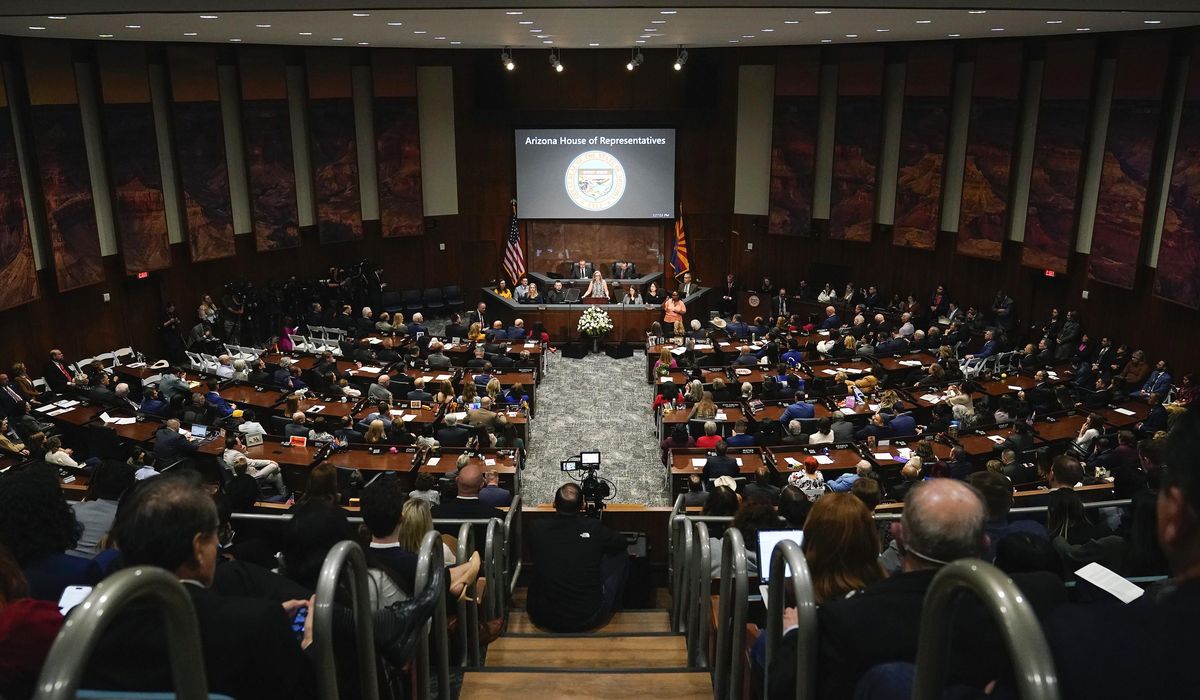


States across the U.S. are in a budget crunch as billions in federal pandemic relief funds sunset at the end of the year.
Tax hikes, slashing spending and raiding rainy day funds are all on the table for states dealing with revenue shortfalls now that the influx of federal taxpayer cash is running out.
In Democratic-run Maryland, the General Assembly was scrambling to reach a budget deal by a Monday deadline after $1.3 billion in tax and fee hikes proposed by the House of Delegates was roundly rejected by the Senate and Gov. Wes Moore.
The state faces soaring deficits to pay for education and transportation projects. The legislature has to pass a $63 billion budget — about $1 billion smaller than last year — by the end of the legislative session on April 8.
Josh Goodman, a senior adviser of state fiscal health at Pew Charitable Trusts, said states are now having to confront what returning to a fiscal normal looks like.
“One of the big questions for states that do have problems, which isn’t all of them right now, at least on a short-term basis is: Do we want to use our reserves,” Mr. Goodman said. “Do we want to cut spending? Do we want to increase revenue?”
In Arizona, Democratic Gov. Katie Hobbs and the Republican-run legislature are locked in a drawn-out budget fight over resolving a $2 billion shortfall. Ms. Hobbs’ initial plan, which was rejected by Republicans, included slashing the state’s school voucher program.
California Gov. Gavin Newsom’s $291.5 billion budget proposal reduces spending by about 9.6% to make up an expected $38 billion budget shortfall without raising taxes. Mr. Newsom, a Democrat, wants to use about $12 billion from California’s “rainy day” fund to maintain priority programs such as covering illegal immigrants under the state’s Medicaid program.
He also wants to defer spending on other programs such as a pledge for a 5% annual increase to base funding for state colleges and universities.
“It’s a story of correction, a story of normalization after a period of a tremendous amount of distortion,” Mr. Newsom said of his budget plan.
The “distortion” is a side effect of revenues softening during the pandemic as billions in federal aid flooded state coffers.
In other states, the budget battle isn’t over deficits.
Virginia under Gov. Glenn Youngkin, a Republican, emerged from the COVID-19 pandemic with a surplus. But he is now battling the Democratic-run General Assembly over the $2.6 billion of tax increases in its recently approved two-year budget.
The legislature nixed Mr. Youngkin’s plan for income tax cuts and a state sales tax increase to 5.2% from 4.3%. He also wanted to expand the sales tax to digital services, such as subscriptions to Netflix and Hulu.
Mr. Youngkin has been touring the state to decry the General Assembly proposal as a “backward budget.” He can amend or line-item veto the budget for lawmakers to consider when they reconvene on April 17 for a one-day session.
Wes Tharpe, senior adviser of state tax policy for the Center on Budget and Policy Priorities, said it is a time of reckoning in state capitals.
“There’s that real potential based on a state’s own policy choices over the past two or three years during the pandemic and the recovery to really start to show up on the other side as we emerge into this new phase,” he said.
For more information, visit The Washington Times COVID-19 resource page.
• Alex Miller can be reached at amiller@washingtontimes.com.
